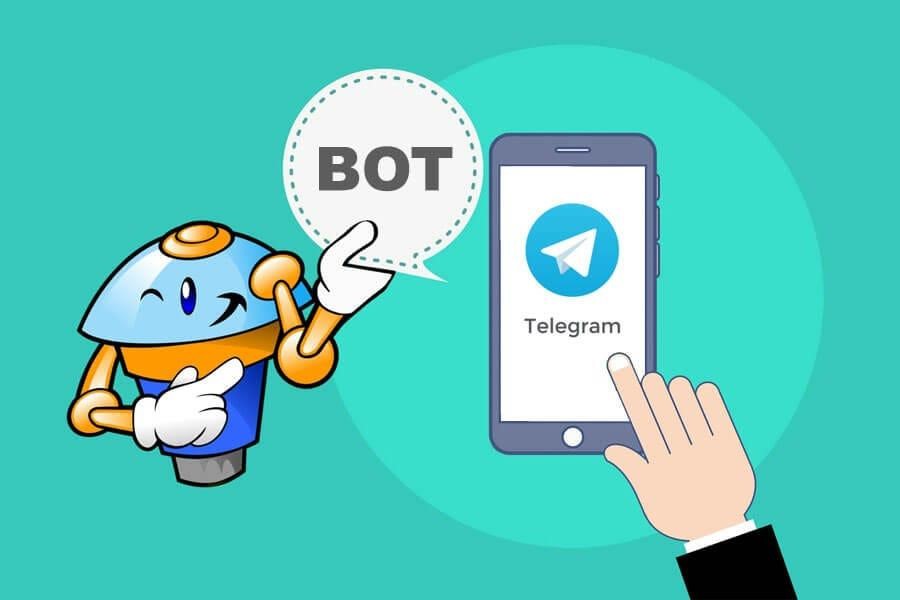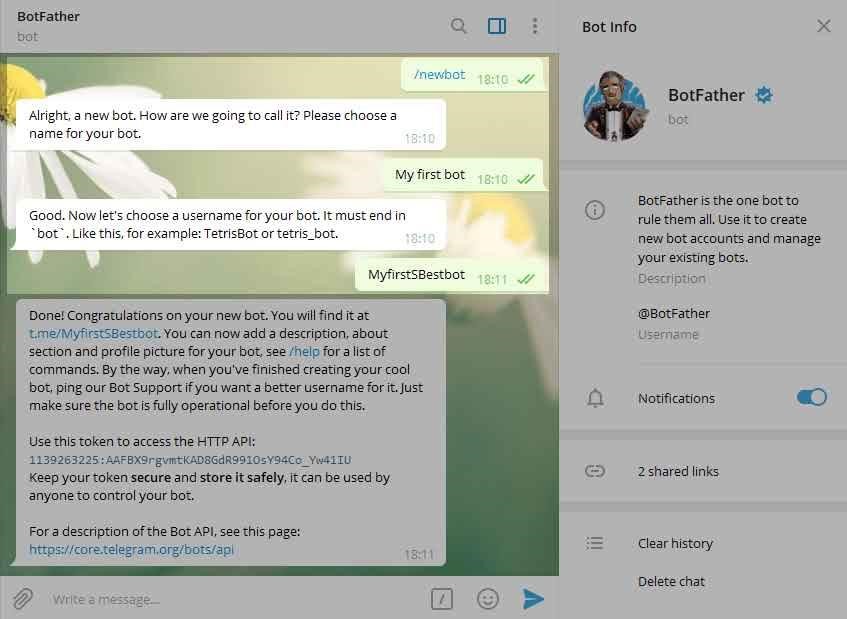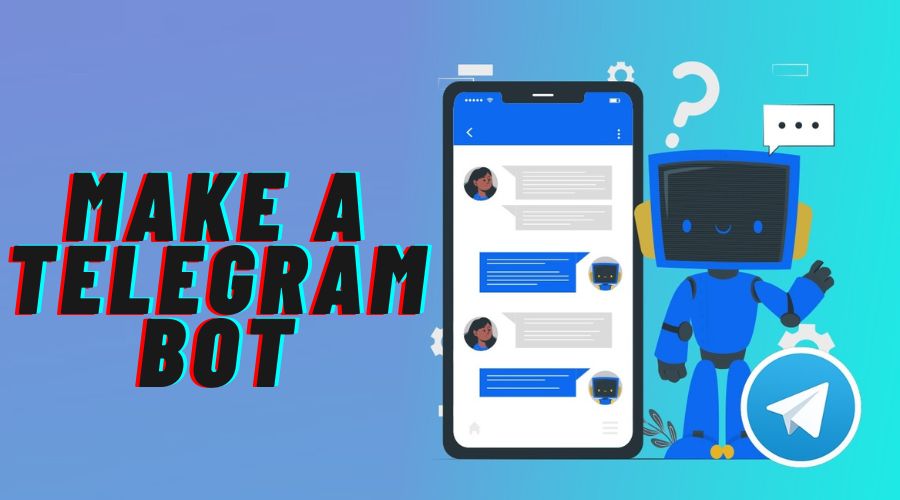Are you looking to create your own Telegram bot? Creating a bot on Telegram can be a fun and rewarding project, allowing you to automate tasks and interact with users on the popular messaging app. Whether you are a programmer or a beginner, this article will guide you through the process and help you create your Telegram bot.
Telegram is a messaging platform known for its privacy features and extensive bot support. Bots on Telegram can be powerful tools, capable of performing a wide range of functions such as giving information, sending notifications, or even playing games. With the proper knowledge and resources, anyone can create their bot and unleash its potential.
Making a Telegram bot may seem daunting, but it can be a rewarding and enjoyable experience with the right guidance. This article will provide you with step-by-step instructions on how to make your own Telegram bot, no matter your level of coding expertise. From setting up a bot account to coding its functionalities, you will learn everything you need to know to bring your bot to life. So, if you are ready to take your Telegram experience to the next level, let us get started on creating your very own bot.
What is a BOT?

Think of bots as your trusty digital assistants. They are like little computer helpers who take care of your tasks online. From managing heaps of data to lending a hand with customer service, bots are becoming the go-to solution for streamlining tasks and saving precious time.
Picture this: you are juggling multiple things at once, and suddenly, a bot step in to take care of the repetitive tasks, leaving you free to focus on what truly matters. Whether handling routine interactions, sorting through complex data, or assisting with your daily workload, bots are versatile problem-solvers.
They are the behind-the-scenes heroes of the internet, lending their skills to various roles like marketing, customer support, and even automating job processes. So next time you encounter a bot, think of them as your digital sidekick, here to make your online experience smoother and more efficient.
What is the Use of BOT?
Bots, particularly Telegram bots, serve a wide range of purposes and offer various benefits, including:
Automation: Bots can automate repetitive tasks, saving time and effort for users. They can perform tasks such as sending scheduled reminders, processing orders, or managing group interactions.
Information Retrieval: Bots can provide information on-demand, such as weather forecasts, news updates, or answers to frequently asked questions. They can access databases or APIs to retrieve real-time data.
Customer Support: Bots can be used for customer service, providing instant responses to common queries and guiding users through troubleshooting. They can escalate complex issues to human support agents when necessary.
Entertainment: Bots can entertain users with games, quizzes, or interactive experiences. They can also share jokes, memes, or interesting facts to engage users in conversation.
Personal Assistants: Bots can act as personal assistants, helping users manage their tasks, appointments, and reminders. They can also provide recommendations based on user preferences and behavior.
Content Delivery: Bots can deliver personalized content, such as news articles, product recommendations, or educational resources. They can tailor content based on user interests and engagement history.
Transaction Processing: Bots can facilitate transactions, such as ordering products, making reservations, or transferring funds. They can integrate with payment gateways and other services to streamline the process.
Community Engagement: Bots can facilitate communication and collaboration within communities or groups. They can moderate discussions, organize events, or provide administrative functions.
What are the Types of BOT?
Telegram bots can be categorized into various types based on their functionality and purpose. Here are some common types of Telegram bots:
- Utility Bots: These bots provide various utility functions, such as weather updates, currency conversion, language translation, reminders, or file management.
- Informational Bots: Informational bots are designed to provide users with specific information on demand. They can fetch data from APIs, databases, or websites and present it to users in a structured format. Examples include news bots, Wikipedia bots, and dictionary bots.
- Entertainment Bots: Entertainment bots aim to engage users with fun and interactive content. They may include games, quizzes, joke generators, or bots that generate memes or GIFs.
- Personal Assistant Bots: Personal assistant bots help users manage their tasks, schedules, and personal information. They can schedule reminders, set alarms, manage to-do lists, or even provide personalized recommendations based on user preferences.
- Customer Support Bots: Customer support bots are used by businesses to automate customer service interactions. They can answer frequently asked questions, provide product information, or assist users with troubleshooting.
- E-commerce Bots: E-commerce bots enable users to browse products, make purchases, track orders, and receive notifications about sales or promotions. They may also provide personalized product recommendations based on user preferences.
- Social Media Bots: Social media bots integrate with popular social media platforms like Twitter, Facebook, or Instagram to perform various tasks such as posting updates, replying to messages, or analyzing engagement metrics.
- Workflow Automation Bots: Workflow automation bots streamline repetitive tasks and workflows within organizations. They can automate processes like data entry, report generation, or task assignment, improving efficiency and productivity.
- Educational Bots: Educational bots deliver learning content, quizzes, tutorials, or language lessons to users. They can help students study, practice skills, or acquire new knowledge in a personalized manner.
- Healthcare Bots: Healthcare bots provide medical advice, symptom assessment, medication reminders, or mental health support to users. They may also connect users with healthcare professionals or resources in their area.
These are just a few examples of the types of Telegram bots available. Bots can be tailored to serve virtually any purpose, and their functionality can be customized based on the needs of users and businesses.
What is the need for Telegram Bot?

Telegram bots fulfill several needs, making them valuable tools for both individual users and businesses:
- Automation: Bots automate tasks, reducing manual effort and saving time. They can handle routine tasks like sending notifications, processing orders, or answering frequently asked questions without human intervention.
- 24/7 Availability: Bots operate round the clock, providing instant responses to user inquiries regardless of the time zone or business hours. This availability ensures prompt customer support and engagement.
- Scalability: Bots can simultaneously handle large volumes of interactions, making them scalable solutions for businesses with growing user bases or high message traffic.
- Cost-Effectiveness: Bots are cost-effective alternatives to human resources for tasks that don’t require human judgment or emotional intelligence. They can handle repetitive tasks at a fraction of the cost of hiring and training personnel.
- Enhanced User Experience: Bots offer a seamless and user-friendly interface for interacting with services, providing convenience and efficiency to users. They can personalize interactions, deliver relevant content, and provide quick solutions to user queries.
- Data Collection and Analysis: Bots can collect data from user interactions, such as preferences, feedback, and behavior patterns. This data can be analyzed to understand user needs and preferences, inform decision-making, and improve services.
- Integration with Third-Party Services: Bots can integrate with external APIs and services to provide additional functionalities, such as weather updates, news alerts, or e-commerce transactions. This integration expands the capabilities of bots and enhances user experience.
- Engagement and Marketing: Bots can engage users with interactive content, games, quizzes, or promotional offers, fostering brand loyalty and driving customer engagement. They can also send targeted messages and updates to subscribers, increasing brand visibility and customer retention.
How to Create a New Telegram Chatbot
Open the Telegram app on your device and search for “BotFather” in the search bar. BotFather is the official bot provided by Telegram for creating and managing bots.

Step 1: Once you have found BotFather in the search results, click on it to “start” to begin a conversation.

Step 2: A list of commands to control bots will be sent to you. Choose the /newbot command, type it in, and send it.

Step 3: Give your bot a name so that when you have conversations, your subscribers can see it. For users to locate your bot through search, you must also choose a username for it. Your bot’s username must be distinct and contain the word “bot.”

Step 4: Your chatbot will be generated after you select a name. A message containing a link to your bot (t.me/), guidance on configuring a description and profile picture, and a set of commands to operate your new bot will be sent to you.
Step 5: BotFather will create a token for your bot after you select a username. Your bot can interact with Telegram’s servers using this token, which is a unique identification. You will need this token to authenticate your bot later, so be sure to copy and store it safely.

Step 6: Once your bot has been created, you can use BotFather to add commands, change its profile picture, and alter other settings. To make any desired changes, follow the BotFather’s instructions.
Now that you have the token for your bot, you can use Python, Node.js, or other programming languages to begin developing its functionality. To integrate the features you want for your bot, use the Telegram Bot API and the token you got from BotFather to communicate with Telegram’s servers.
How to Find a Token for an Existing Bot
Step 1: Send the /token command to the @BotFather bot while logged in.

Step 2: Buttons for your current bots will be visible.

Step 3: Copy your token value.

As a result, BotFather will list every token you have created if you have many bots. Make sure the token you are copying is the right one for the bot you are using.
FAQs
Q. How do you automate Telegram using Python?
You can use the python-telegram-bot library to automate Telegram using Python. Using Pip, install it, then use BotFather to create a Telegram bot and get the bot token. Send and receive messages, act, and communicate with Telegram using the library’s API. Use Python code to implement your desired automation logic, then run it to automate your Telegram bot.
Q. Is it easy to create a Telegram bot?
Yes, building a Telegram bot is relatively easy. To create and manage bots, Telegram offers a dedicated BotFather bot. By interacting with BotFather, you can establish a new bot, give it a name, specify its username, and get an exclusive API token. With Python or any other programming language, you can use the token to authenticate and communicate with the Telegram Bot API after obtaining it.
Final Thoughts
Creating a Telegram bot can be a rewarding experience, offering endless possibilities for automation and interaction. Whether you want to create a bot for personal use or business purposes, following these steps will help you get started on your Telegram bot journey. With creativity, dedication, and continuous learning, you can develop a bot to enhance your Telegram experience and benefit countless other users. So, why wait? Start building your Telegram bot today!
